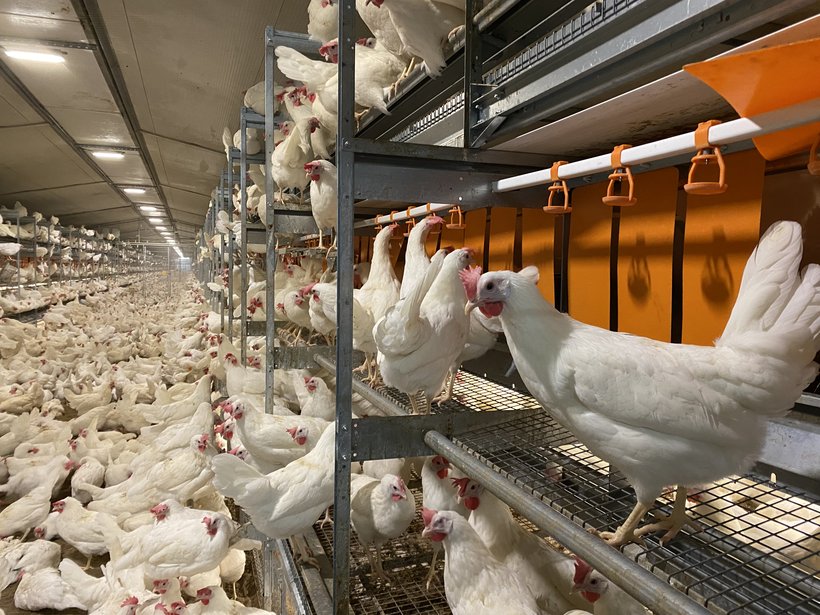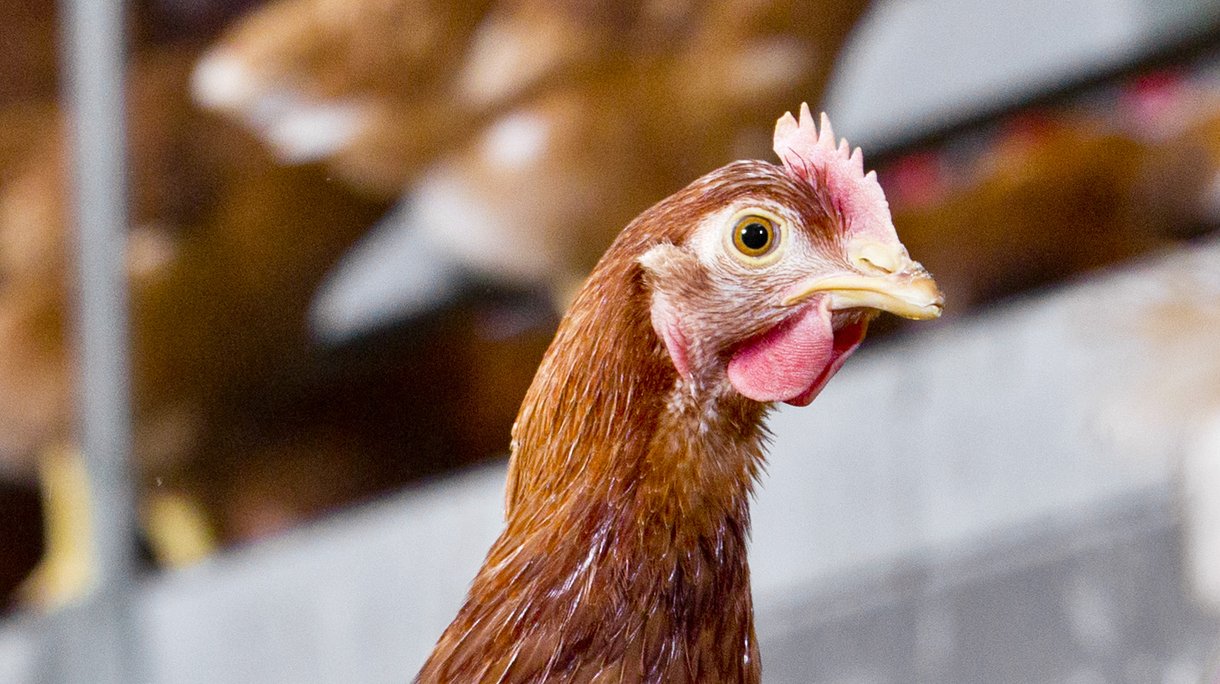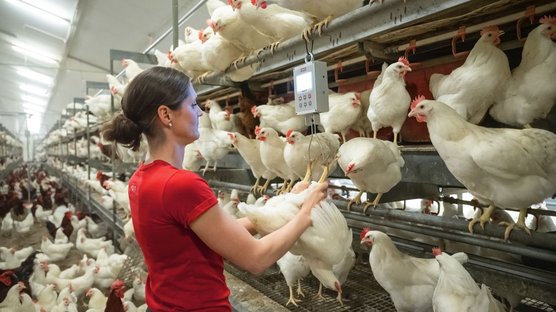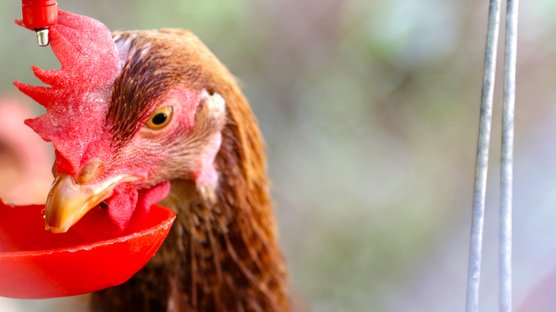
Published on Feb. 7, 2024
The perfect start for your flock of laying hens: guidance to optimize gut health
The preparations towards the onset of lay in a laying hen are marked by significant metabolic and hormonal changes, environmental changes and changes in the nutritional requirements. The metabolic and hormonal changes are essential for the development of the reproductive system, particularly the ovaries and the oviduct, as they play the major role in egg production.
During the first weeks in the rearing farm it is important to support the transformation from a small, fully dependent, day-old chick into a good quality pullet. During the final phase of rearing and at the start of the laying period, we need to support the transformation from a pullet into a productive and robust laying hen. By carefully monitoring the flock, and recording and analyzing the data the flock provides to you, it will be easier to establish an appropriate feeding program for the hens, which will be able to support them through the various stages of growth and production.
When the reproduction organs start to develop, the laying hen requires more energy and water, resulting in a higher intake of these nutrients by the laying hen. Besides, the nutrients which were previously solely used for growth and maintenance will also be needed to produce the egg and the eggshell. In order to tackle this sudden increase in nutritional requirements, the laying hens (and other birds) have established unique physiological characteristics. Next to the hens’ ability to increase her feed intake significantly within just a few weeks, they also develop unique bone characteristics, the so called medullary bone. The medullary bone is functioning as a calcium reservoir, and as soon as the hens’ preparations for egg production have started, the laying hen is able to mobilize calcium for eggshell formation from the medullary bone. This specialization has a major impact on the hen’s total calcium metabolism.
Photo stimulation triggers a hormonal change by the release of the gonadotropin-releasing hormone (GnRH) from the hypothalamus, which does not only stimulate the follicle-stimulating hormone (FSH), but also the luteinizing hormone (LH) from the pituitary gland. These GnRH and LH hormones are crucial for the development and release of the follicles, which form the basis for egg production. The follicles are producing the hormone called estrogen, better known as the “female hormone”. Estrogen stimulates the oviduct development and the formation of egg yolk.
Overall, the transition from the rearing to the production phase is accompanied with stress. Not just related to the hormonal and metabolic changes that are increasing the stress in the laying hens, or the immune responses related to the vaccinations, but also related to the transfer of the birds that happens in many occasions around the same time. The good news, there are tools to support the laying hens during this specific period from a nutritional point of view. The main focus should be on creating and maintaining optimal gut health, as this directly influences nutrient absorption and overall performance in later life.
Optimizing gut health starts with minimizing external nutritional stressors, like mycotoxins, hard to digest raw material or changes in feed structure.
- Mycotoxins can have detrimental effects on gut health. Regular monitoring of mycotoxin levels and applying methods to reduce the impact of the present mycotoxins is highly recommended.
- Especially during the phase of metabolic changes, enzymes can support nutrient utilization and support gut health. It is recommended to use at least a minimum dose of enzymes (including phytase and an NSP enzyme that is suitable for the raw materials used) at the start of lay.
- Using good digestible and high-quality raw materials helps to improve nutrient utilization, without overloading the hen with metabolic pressure. Therefore try to minimize the use of hard to digest raw materials. Next to this, try to prevent big differences in the inclusion of raw materials, as well as differences in feed structure between different diets.
- Managing calcium levels in the different dietary stages is crucial, particularly during the early stages of egg laying. While calcium is absolutely essential for proper eggshell formation, excessive levels can negatively impact gut health and the calcium metabolism. It is strongly advised to have a smooth transition (for example in multiple steps) in calcium levels from the rearing phase towards the first layer phase.
- Some phytogenics, pre- or probiotics, and organic acids have shown positive effects on gut health, mainly in reducing inflammation, improving the intestinal barriers or improving digestion, they can be of good support to minimize gut health disturbances.
- Coarse fibers have a positive impact on gut peristalsis and therefor on overall nutrient utilization and digestive health. In the field we see good results of adding 2% of coarse fiber materials (like oat hulls), on digestive health and feather cover.
Basically, a laying hen converts feed and water into eggs and feces. For this reason, intestinal integrity is essential for maintaining the productivity and profitability of laying hens through the number of eggs produced per hen housed, the flocks’ laying persistency, feed conversion, egg weight and internal and external egg quality. Having a close look at intestinal integrity, and responding with nutritional interventional, will increase the chance of having a successful flock.
We can conclude that in order to have a perfect start for your laying hen flock, and to ensure the maximum genetic potential over the hens’ lifetime, it is key to prioritize on gut health until the peak of production is over. Various nutritional solutions can support you in your management practices to support the basis of a healthy and productive laying hen flock. Regular flock monitoring, as well as adjusting the diet based on the hens requirements, are crucial for long-term success in egg production and the overall well-being of your laying hen flocks.
Reach out to related articles:
- Further reading about how to support the transfer of the hens from a management point of view: https://layinghens.hendrix-genetics.com/en/articles/Transfer-of-pullets-to-the-laying-house/
- Further reading about Mycotoxins: https://layinghens.hendrix-genetics.com/en/articles/mycotoxins-small-in-size-big-in-damage/




